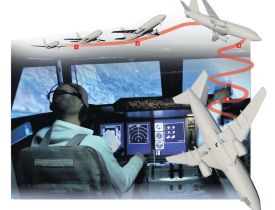The current generation of flight simulators used for pilot training are ever better able to simulate aircraft in normal flying conditions. But this does not apply when it comes to simulating aircraft in abnormal circumstances, during an ‘upset’, in which the pilot is in danger of losing control of the aircraft. The European Simulation of Upset Recovery in Aviation (SUPRA) project aims to clarify which specifications a simulator must meet to simulate these unusual flight characteristics. This will enable pilots to train in upset conditions, which are too dangerous and expensive to simulate in real flight.
The simulation models were developed in 2011 to test the improvements to training in upset conditions. The project pursues two lines of research. The first involves the construction of a mathematical model that should be able to simulate the behaviour of aircraft carrying out extreme manoeuvres. One such unintentional movement occurs during a stall, which is when an aircraft loses speed to the extent that its wings lose their lift and the aircraft falls. During this manoeuvre, complex aerodynamic effects occur that cause the aircraft to move in a way that cannot be properly practiced in the current generation of simulators. By gaining a better understanding of these aerodynamics, more realistic simulations of flight in all conditions can be developed.
The second line of research is the ‘translation’ of such manoeuvres into simulator movements that seem realistic to the training pilots. To achieve this, the project has access to the NLR SUPRA simulator facilities, but also those of the TNO and the Russian TsAGI. An uncontrollable aircraft, whatever the cause, is the primary cause of air accidents around the world. That means SUPRA has the potential to make a major contribution to the improvement of air safety.
Pilots have to be able to train for unusual situations in simulators. The SUPRA project charts the requirements simulators must meet to replicate exceptional flight characteristics

